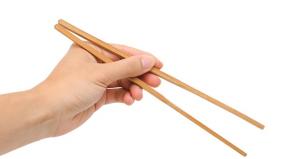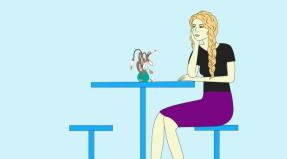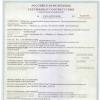How to learn to write with two hands. Ambidextrous means genius? Should I teach my child to write with both hands? Do familiar things in a new way
Right-handedness and left-handedness are one of the most interesting puzzles for neurologists. Less than one percent of the world's population are ambidexters, that is, people who equally own both hands. Some research (and mostly ambidexterity) shows that non-dominant hand training can boost creativity, change thinking, and strengthen neural connections in the brain.
In general, ambidexterity, just like right-handedness and left-handedness, has been studied very little. However, mastering both hands does make the brain work better. And if you are a musician, then you understand how important the quality work of the left and right hands is. So how do you train your non-dominant hand?
Write
To control your secondary hand, your brain must form new neural connections. This is not a quick or easy process, so you have to put in many hours of practice if you decide to become an ambidexter. The process of developing motor skills will give you a whole new idea of what it's like to master your limbs as an infant.
Start slowly. Write the capital and small letters of the alphabet, and then you can move on to sentences. Use a notebook (or better - paper) with a thick ruler to make it easier to fit the letters. At first, your writing will look rather deplorable, but you must realize that the process of mastering the hand, which for many years performed only a secondary function, cannot be quick. Stock up on patience.
Watch out for lefties if you're right handed. Look at how they put their hand while writing, at what angle they hold a pen or pencil, and try to copy their style. But make sure you are comfortable.
Practice
Try to write your opinion many times and the most common words like "hello", "how are you", "good" and so on. Then feel free to move on to suggestions. Choose one and prescribe it many times over a long period of time. Be prepared for the fact that your fingers and hand will hurt after practice. This is an indicator that you are training the muscles for the first time.
When you master the spelling of certain words and phrases, move on to the next practice. Take the book and open it to the first page. Rewrite a page of text at a time each day. It is not necessary to rewrite the entire book, but regularity is important in practice. After a week, you will already see that you have begun to write better and more accurately.
draw shapes
Try to draw basic geometric shapes such as circle, triangle, square. This will help strengthen your left hand and give you better control over your pen or pencil. When the circles and squares become more or less even, move on to three-dimensional figures, including spheres, parallelograms, and so on. Then color your creations.
Also try drawing straight lines from left to right. This will teach you how to write, and not pull the pen behind you.
Master the mirror spelling of letters
Did you know that Leonardo da Vinci was not just an ambidexter, but he also knew how to write in a mirror? So why not develop these same qualities in yourself? Try to write from right to left and master the mirror spelling of letters. To do this, take a small glass and try to rewrite what is reflected in it. This will force your brain to think at times more active, so you can quickly get tired.
Choose the right handles
Hard and gel pens are best because they require less pressure and force to write, making the learning process more comfortable and the hand less prone to cramps. But use quick-drying ink, otherwise the text will be smeared by your own hand.
Change your habits
Observe yourself and realize that most of the automatic actions you perform with one hand. This habit is deeply ingrained both physically and mentally. If you default to opening doors with your right hand, start opening them with your left.
If you usually step with your right foot, consciously step with your left. Keep working on this until the control of the left side of the body becomes natural and easy.
Perform simple actions with your left hand. Try brushing your teeth, holding a spoon, fork, or even chopsticks, washing dishes, and even typing messages using your other hand. Over time, you will develop this habit.

Tie the dominant hand
The hardest part of the practice is remembering to use the other hand. A good way is to tie your right hand at least while you are at home. It is not necessary to tie all the fingers, it will be enough for you to tie the thumb and index fingers with a thread. On the street, you can put your right hand in your pocket or behind your back.
Strengthen your hand
To make the movements natural and simple, you need to constantly strengthen the muscles of the arm. Take a tennis ball, throw it and catch it. You can also just squeeze it with your left hand to strengthen your fingers.
Play tennis and badminton with your racquet in your other hand. At first, you will be very uncomfortable, but regular practice will bear fruit.
And the most banal, but, as it turns out, difficult action. Take the computer mouse in your left hand and try to type with your left hand. It's harder than you think!
Remember that in any case, practice is important. If you decide to master your left hand in the same way that you have mastered your right hand all your life, do not forget to train every day.
Ekaterina Romanova
Many will say - it's impossible! After all, only the elite can write with both hands at the same time. However, this is not quite true. Everyone is capable of this. You just need to be patient and practice.
Here are 4 steps to help you learn to write with two hands simultaneously:
1. Learn to use two hands at the same time
You need to start simple. Just practice using both hands at the same time. To do this, try to display the same geometric shapes with both the right and left limbs. At first, the non-working hand will display shapes that are vaguely similar to circles and squares, but after a few days of training, you will succeed. When you are sure that the figures are identical to each other, proceed to the next step.
2. Make it harder
Now we need to print the letters. This is much harder to do than shapes, because letters are more complex in structure. As soon as the letters are finished, move on to the words.
3. Draw different shapes
Before that, you trained your hands. This is definitely not enough. Now you need to train your brain. Try drawing a square with one hand and a circle with the other. Do this exactly at the same time, and do not draw dashes in turn with each hand. Don't give up and practice until you get beautiful figures.
4. Write different words
When the figurines are finished, it's time for the hardest part: writing different words. This is the most difficult stage of the entire training, so be prepared. Practice and you will succeed. Try to write whole phrases and sentences. Always set yourself impossible tasks and solve them. This is the only way to achieve perfection in this matter. Good luck on your way to the laurels of Julius Caesar!
Many people have such a useful skill as writing text with two hands. At first glance, this is not such an achievement, but by working on such writing, you learn to use both hemispheres of the brain at the same time, which allows you to improve mental activity, intuition, develop intelligence, equally own both right and left hand.
By the way, some people have this ability developed from birth. The left and right hemispheres of such people can work independently of each other, which is why such a result is achieved. This phenomenon is usually called the term ambicerebral.
And for those who are not endowed with such a skill, we can say one thing: the key to success in this matter is regular training and good patience. If you constantly learn to write with both hands, moving from simpler things to more complex ones, then subsequently writing any texts at the same time with both your left and right hands will not be difficult for you.
You can actually start exercising. Try to simultaneously display simple geometric shapes, draw various objects. Do not rush to immediately draw something unrealistically complex, let it be primitive drawings of animals, insects. When drawing any animal, for example, you draw the left eye with your left hand and, at the same time, draw the right eye with your right hand. So work on each part of the picture. It's the same with shapes: you draw triangles, squares, ovals with both your right and left hand, but only each hand works on a separate object. The left one is above one oval, and the right one is above another, etc.
Don't be upset if you don't get anything for a long time. As with any new activity, it takes practice. Initially, the figures and drawings will turn out terrible, but gradually their quality will improve and you will do everything automatically.
After you have learned how to draw various objects with ease, move on to letters and learn how to write them. This will be somewhat more difficult, since the letters are more complex in their structure, but nothing is impossible. Just rewrite the alphabet daily with both hands from A to Z, first large letters, and then small ones.
When the letters will more or less work out, also start writing words and expressions with both hands. At first, limit yourself to a few lines a day, but then increase the number of words, sentences, as your writing skill develops.
Next, you need to complicate your task. Learn to draw or write with two hands, but different shapes and letters. This means that you draw a square with your left hand and an oval with your right hand, or one letter with your right hand and another with your left.
When you get comfortable with simple letters and objects, make it harder by writing whole words and sentences.
From now on, regularly work on developing the skill of writing with two hands. It can take up to two or more months for you to learn to work almost perfectly with both your left and right hands at the same time. If you want to complicate your task even more, because. you can easily cope with words and pictures, then here is another exercise for you:
try writing one phrase in English with your left hand, and the same phrase with your right hand, but in Russian. How do you like the task? Or just look at the picture below: 
If you have difficulty writing different words with both hands, then at first try to limit yourself to short words, expressions of 2-3 words. The fact is that writing one thing with one hand and the other with the other is really very difficult for those people whose brain is not adapted to such actions from birth and you need to devote a lot of time to such practice in order for everything to work out.
As a small addition to develop this ability:
-if you are right-handed, try those actions that you usually do with your left hand, do it with your right hand and, similarly for a left-hander, use your right hand.
-learn to juggle first with two, and then with three or more balls. This exercise helps a lot to work with both hands at the same time.
That's probably all that can be said on this issue. The only thing I would like to add is that when you learn how to use both hands at the same time, do not rush to say to yourself "Everything is ready", otherwise all efforts will be in vain. Even after mastering this skill, do not stop exercising and continue to practice regularly or complicate your tasks in order to only develop in this direction. Good luck!
About 1% of children worldwide are born with the ability to use both hands equally well (ambidexterity). There is an opinion that double-handedness will make the child more successful. Therefore, now many parents artificially develop it. Psychologists told the AiF-Yugra correspondent about the pros and cons of such an approach to the development of a child.
It's like twine
“Teaching a child to be “double-handed” can be compared to how children are taught to sit on a twine. Parents first of all need to understand for what purpose they develop obedience in children. Someone is born with the ability to use both hands, there are those who do not have it. But if we are talking about teaching a child to write, use scissors, draw with both hands, then I think this is not very useful for him. Because for children who do not have such innate abilities, it will be akin to violence against themselves. And if we are talking about using special exercises to synchronize or resynchronize hand movements in the development of a child, then this, on the contrary, will be very useful, because such practices improve the functioning of the brain lobes, ”says psychologist Larisa Galeeva.
The specialist gives examples of gymnastics: for example, touch the nose with the finger of one hand, and squeeze the fist with the other hand. And alternate these movements. Or make hand movements, as during breaststroke swimming: one hand forward, the other back and so alternate. Teaching a child to be double-handed depends on the complexity of the tasks. In a playful way, this can be done from a very young age. The main thing - without fanaticism.
“To teach a child to write with his right and left hands, if you yourself do not know how, is useless. If you really want to develop such abilities in a child, then at least try to learn how to write with your left hand if you are right-handed and vice versa, ”says young mother Alina Nikanorova.
Pros and cons
One of the significant advantages in the development and presence of ambidexterity in a child is the possession of logical (as in right-handed people) and figurative (as in left-handed people) types of thinking. So, ambidexter children can excel in the field of culture and the natural sciences. They are also better at navigating different situations, viewing them from different angles and from all angles. Such children can successfully participate in both arts and sports because their parts of the brain work more in sync.
But there are also disadvantages. Studies show that left-handers and ambidexters are much more common among patients with schizophrenia. Also, ambidexters in childhood have problems with the distribution of attention. It seems to dissipate, as a result of which it is difficult for the child to focus on one thing.
Children with ambidexterity are much more irritable, lose their temper more quickly, and are also often very whiny. But the choice in which direction to develop children always remains with the parents.
Ambidexter (from lat. ambo - "both" and lat. dextera - "right hand") Photo: pixabay.com
Clinical psychologist Yulia Malinina:
Many experts note that the level of development of an ambidexter child is slightly higher than an ordinary child. For children, special simulators are now being actively produced - prescriptions for simultaneous drawing with both hands. It is best to do this before entering school, when the brain is at its most plastic. Parents who want to teach their child to use both hands equally well should be advised to first study the pros and cons of ambidexterity, then try it for yourself, and only then organize classes with the child, which should be regular. And if your family already has an ambidexter, you don’t need to try to change it. Everyone has the right to be themselves.
Test for ambidexterity
In order to understand whether both hemispheres are really equally developed in a child, one can carry out test by Vladimir Pugach. To do this, take a piece of paper and 2 pens. Try to write the same word at the same time in different directions or in one direction.
And if immediately, or after 5 minutes of training, you succeed, then you are prone to ambidexterity.

5 ways to tell if you're left or right handed. Infographics: AiF / Alexander Minibaev
Do you think the world is divided only into right-handers and left-handers? You are deeply mistaken. It turns out that there are such individuals who are equally good at both right and left hands. Here are some interesting facts from the life of these wonderful people.
They make up 1% of the population
If a person can use both hands equally well, then he enters a narrow circle of unique personalities. There are only about one percent of such people on Earth. For comparison, there are much more left-handers on the planet - approximately 10% of the population.
There could have been many more
Most of us are subject to some level of cross-dominance. With one hand we are better at one task, while the other is reserved for other purposes. Perhaps we did not develop enough skills at one time. 
The cerebral hemispheres of ambidexters are almost symmetrical
Our heroes are different from right-handers, who are strongly left-brain dominant. In ambidexters, the structure of the organ is almost symmetrical. Curiously, the same statement applies to lefties.
They have a neurological phenomenon
Synesthesia, or the phenomenon of "mixed feelings", is not a mental disorder. It gives ambidexters additional possibilities. For example, they can see standard typeface in a spectrum of colors.
There are more schizophrenics among such people.
Studies have shown that people with symmetrical brains are more likely to have a gene associated with schizophrenia. If you are right-handed, then your chances of acquiring this mental disorder are markedly reduced. 
Most of them are bisexual
Another interesting study revealed sexual preferences among ambidexters, left-handers and right-handers. The survey involved 255 thousand people. People who are equally proficient with both hands are more likely to consider both women and men as romantic partners. This was reported by 9.2% of men and 15.6% of women. For right-handers and left-handers, these figures ranged from 4 to 6.3%.
Their intelligence level is slightly lower
People who can write with both their left and right hands score lower on IQ tests. The difference with the "one-armed" in mathematical calculations, memory and thinking is especially noticeable. 
They have difficulty in language skills and are at risk of developing ADHD
A long-term study of 8,000 primary school children found 87 students who were equally good with both hands. It turned out that they all had pronounced difficulties in language skills. By the time these children reached the age of 15 or 16, they were more prone to ADHD symptoms than were right or left handed.
They are more irritable
Ambidextrous are more prone to temper tantrums and whims. Sometimes they feel awkward and clumsy. This is also due to the symmetrical structure of the brain. 
They are more prone to mood swings
Our today's heroes, just like lefties, can be easily shaken emotionally. But right-handed people have emotional stability.
Among them there are geniuses
If it seems to you that all the above arguments are too depressing, and you just enter the 1% of the "elected", do not rush to despair. Instead of mathematical ability, you have been given talent in sports, art, music, and even politics. Prominent representatives of ambidextrous are Leonardo da Vinci, Paul McCartney, Benjamin Franklin, Miyamoto, Harry Truman and others.



















